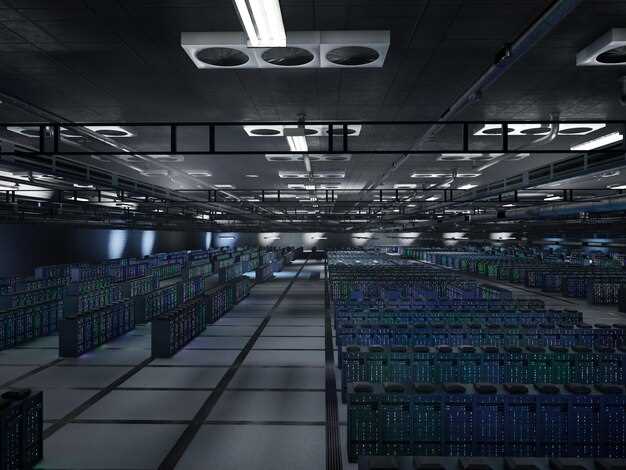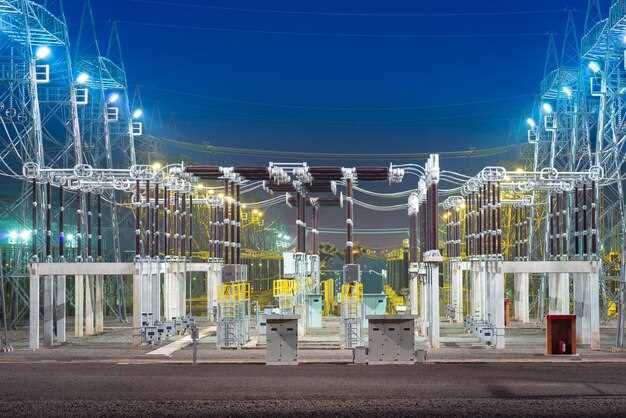Invest in diversified energy strategies: add on-site storage, renewable generation, and intelligent controls to reduce grid draw while keeping operations secure.
That provider-based resilience reduces wrong outages and aligns with goal of continuous, reliable fulfillment. Improvements in control architectures are already delivering improved availability. completely decoupled from grid reliance is difficult; flexible energy-storage strategies and cyber-hardened assets increase capabilities. A bess configuration, though limited, offers quick responses during peak demand, buying time for more strategic interventions. This shift is a good sign for resilience, indicating diversified sourcing reduces single-point risk and supports ongoing operations.
somasundaram notes that improvements in cyber-capabilities and modular architectures reduce response delays, improving resilience across material flows. This insight maps with goal: minimize ripple effects from outages and optimize emergency draw.
Real-world data from facilities with on-site storage show increasing uptime during grid disturbances, as storage and renewable input shift load away from external provider networks. This shift supports goal of continuous operations even when provider networks face outages. Cyber-ready controls isolate critical loads and draw on renewable input when weather cooperates.
Practical steps include mapping load profiles, installing storage, securing communications, testing with renewables, and aligning with provider services for redundancy. Increased cyber protections, innovative supplier arrangements, and secure operations help lock in ongoing reliability.
Grid Dependency and Backup Readiness for Automated Storage Facilities

Implement a fully redundant, dynamic electricity-supply system with automatic switchover within 10 seconds, combining UPS modules, standby generators, and on-site energy storage to maintain operational continuity.
Investment plan should include an addition of 20-40% of capex for backup infrastructure, focusing on high-capacity storage and fast switching. This better supports continuous product flows and reduces downtime costs. Example: mid-size facility with peak loads around 2000 kW can justify 1.5 MWh UPS banks plus a 3 MW genset, yielding 6–8 hours autonomy. Hauptman analysis of historical outages supports this approach, indicating 40–60% reduction in unplanned downtime and economy gains through stable operations during disruptions.
hauptman observations from historical outages reinforce this framework.
Key factors include load profiles, redundancy targets, on-site generation, storage efficiency, and integration with controls. Their dynamic nature requires seamless transitions, using monitoring systems that track voltage, frequency, and conductor conditions across feeders, enabling automatic reconfiguration without human intervention. Conductor sizing should reflect amount of peak current, with margin to accommodate fault isolation and future expansion.
Local resource mix adds resilience: solar arrays, wind, and diesel backups can stabilize supply while moderating energy costs during tariff spikes. Resource pools created within local networks support cross-border partnerships and supplier opportunities. Integration requires a dedicated control layer to coordinate conversion units, battery banks, and loads, guided by local data and historical patterns.
| Scenár | Peak Load (kW) | Backup Type | Autonomy (h) |
|---|---|---|---|
| 6h outage | 1800 | UPS banks 1.5 MWh + 2.5 MW genset | 6 |
| 24h outage | 1800 | UPS banks 1.5 MWh + 4.0 MW genset + fuel reserve | 24 |
| Rolling brownouts | 1500 | Storage-led with grid assist | 8 |
Overall, grid dependency management requires modular, scalable architecture enabling controlled loads, dynamic switching, and rapid recovery. This approach creates opportunities for investment, strengthens economy, and supports product quality across scenarios.
Identify Critical Loads: Which Systems Must Remain Powered During Outages
Create a critical-load taxonomy paired with UPS, on-site generators, and automatic transfer switches to sustain essential lines during outages, needed for continuous operations.
Lower-priority loads are shed automatically; higher-priority assets remain powered via electrical enabling paths. Includes IT networks, data storage, climate-control for perishables, security devices, and emergency lighting. This approach does not rely on any single supply line.
Worst-case scenarios drive design of redundancy across distributed lines from plant to critical zones; miles apart where needed; adopt 2N or 2N-1 schemes for plant-level rooms and data halls.
Mathematical sizing converts load signals into capacity requirements; calculate kW per zone, then map to a total supply that matches sustainability targets and market realities, including potential growth.
Implementation requires to integrate UPS, batteries, and standby gensets; connect via automatic transfer with slow ramp to avoid inrush; install remote monitoring; plan regular tests; avoid outmoded approaches.
Maintenance cadence: quarterly tests, annual reclassification if usage changes; sustain stability; theyre capabilities enable rapid response to faults; being proactive reduces risk; keep usage patterns in mind and potential loads; Difference between critical and noncritical loads becomes evident during drills; Every cycle demands validation; systems respond within worst-case timelines and lines stay energized where needed.
Assess Onsite Generation Options: Solar, Batteries, and Generators for Warehouses
Adopt a hybrid onsite generation approach: roof PV paired with battery storage and a compact standby generator to cover daytime demand peaks and outages. Solar adds renewable capacity; published analyses show such configurations reduce reliance on external supply and support resilience. This arrangement mitigates vulnerabilities and addresses needs for a robust transition toward energy autonomy.
Sizing guidelines: target PV to meet 15–25% of daytime load in sunny states, with 4–6 hours of storage for charging windows and peak shaving. A standby genset in 100–500 kW range covers residual outages. Capital spending for PV plus storage varies by region, often $1.2–$2.5 per watt installed before incentives, and spending patterns are already visible across states.
Implement advanced metering and supervisory controls with innovative cloud-based monitoring to track machine loads, state of charge, charging cycles, and generator status. Use sources from PV, storage, and auxiliary stations to feed critical loads; drive engagement from facility teams through a centralized dashboard.
Battery selection: lithium-ion for fast response and compact footprint; long-duration options like flow cells align with needs for multi-shift operations. Target 4–12 hours of autonomy depending on peak loads. Inverter/charger hardware should support 0.8–0.95 round-trip efficiency and rapid charging cycles.
Fuel strategy: prefer natural gas or ultra-low-sulfur diesel with high-efficiency engines; ensure on-site fueling stations comply with risk controls; implement automatic start on outage and quiet mode to meet local noise limits. In some states, incentives or standards dictate emissions controls.
Onsite options ultimately support transition away from traditional reliance on external supply. This shift reduces vulnerability to outages and price spikes, aligns with sustainability goals, and meets operational needs.
Frame a phased deployment with pilot stations, cloud-based metering, and KPI such as availability, energy cost per unit, and payback period. Analysts said improvements in reliability and cost controls stem from disciplined asset management, standardized data sources, and continuous operator training; these measures require broad engagement.
UPS and Power Conditioning for Robotics, AS/RS, and HVAC
Install online UPS blocks with N+1 redundancy for robotics controllers, AS/RS drives, and HVAC controls; target 15 minutes runtime at peak demand; choose Li-ion banks for compact footprint and quick recharge; configure hot-swappable strings to sustain uptime during maintenance; enable end-to-end monitoring and automatic alerts.
Conditioning should include isolation transformer, active harmonic filtering, surge protection, and precise voltage regulation across operating range; three-phase four-wire layout with tight regulation; designed to handle anomalies such as sags, swells, and transient spikes; transformers sized to support continuous operation of robotics, AS/RS, and HVAC loads.
Solar integration enhances resilience; PV arrays offset daytime load, while battery banks support longer runtimes during storms; connection to public utility via controlled interaction reduces demand penalties; mechanism supports respond to demand spikes; addition of energy storage mitigates peak load during process transitions.
Analyzing quality data with smart meters and cyber secure communication enable diagnosing faults; comprehensive checks on transformer health, UPS efficiency, and charging cycles underway; dashboards facilitate rapid diagnosis; telegrafi references public updates on resilience within industry provide context for best practices.
Benefits include smoother motor control, longer life for drives, fewer incidents from supply anomalies, improving reliability for end-to-end robotic processes, and steadier climate control from HVAC systems; public stakeholders see advantages amid storms, with solar integration reducing demand spikes and improving overall resilience.
Implementation checklist: map critical loads, size UPS per device, test 15-minute runtime monthly, schedule transformer health checks, deploy remote monitoring, train staff to interpret alerts, ensure addition of cyber robust access controls; this approach requires disciplined testing, quarterly drills, and supplier audits; establish guidelines for fault response to public safety events.
Implement Demand Response and Load Shedding to Manage Peak Demand
Recommendation: implement a two-tier demand response program with automated load shedding, targeting 5-10% reduction during normal peaking windows and 15-25% during extreme events, validated by real-time monitors. In a landscape of price volatility, DR delivers reliability, making alignment with market signals and local conditions, understanding nature of demand shaping events, leveraging a curated list of shedding candidates across sites to drive rapid, low-risk solutions.
- Segmentation: classify loads into critical machine processes, climate control, lighting, and non-essential systems. Apply shedding to non-critical segments first while preserving availability for safety and core operations. Use segmentation data to map same-control actions across locations.
- Control architecture: implement direct load control with huaweis devices connected to existing building management systems, site EMS, and remote orchestration. Ensure fast signaling (seconds to minutes) with consistent responses across all facilities using standardized rules, solutions suited for multi-site rollout.
- Upgrades and replacement: accelerate upgrades to monitoring, high-voltage feeders, and transformers where needed. Replace aging switchgear with modular, isolation-friendly units to reduce risk during shedding.
- Offline and testing: schedule quarterly offline drills to validate shedding sequences, using simulated signals to avoid production disruption while preserving equipment lifecycle.
- Safety and isolation: implement isolation strategies so shedding does not compromise critical safety circuits. Use separate feeds or backup generation for critical loads where needed to maintain continuity against cascading trips.
- Monitoring and metrics: use monitors to track availability, peaks, and system health. Record data on frequency, duration of shedding events, and recovery times. Use these insights to refine replacement cycles and sustainability goals.
- Lifecycle and sustainability: adopt lifecycle planning to align investments with future demand, enabling smoother replacements and upgrades, reducing waste, and improving energy-use efficiency.
Test, Validate, and Monitor Grid Resilience with Regular Drills
Start with a structured drill program: weekly 60-minute sessions, automate data collection, standardize incident logging, and run real-time dashboards that prove assets-driven stability under elevated load.
Include policy constraints and frequency targets: monthly cadence, 80%+ test coverage, to accelerate modernization, maximize investment return, and protect industrial connection points.
Design tests to measure product resilience and damage thresholds, designed to stress equipment and control systems in three levels: bench, field, and full-scoped simulations.
Incorporate elements that high-voltage systems face; simulate load surges toward critical connection nodes.
Use provided scenarios including asset loss, connection faults, and spillover impacts that affect every aspect of stability. theyre data-driven inputs guide decisions on product inventory, asset prioritization, and investment toward critical connection. they align priorities across teams.
To automate routine checks, deploy scripted tests and digital twins. Automated checks reduce audit time and speed decision cycles.
Regular drills identify policy gaps, validate policy robustness, and reduce damage by anticipating load scenarios.
Frequency-based simulations reveal gaps for assets, load boundaries, and policy compliance across sites.
Results let teams compare asset groups and adjust modernization roadmaps.

 Can Modern High-Tech Warehouses Rely on the Power Grid?">
Can Modern High-Tech Warehouses Rely on the Power Grid?">
